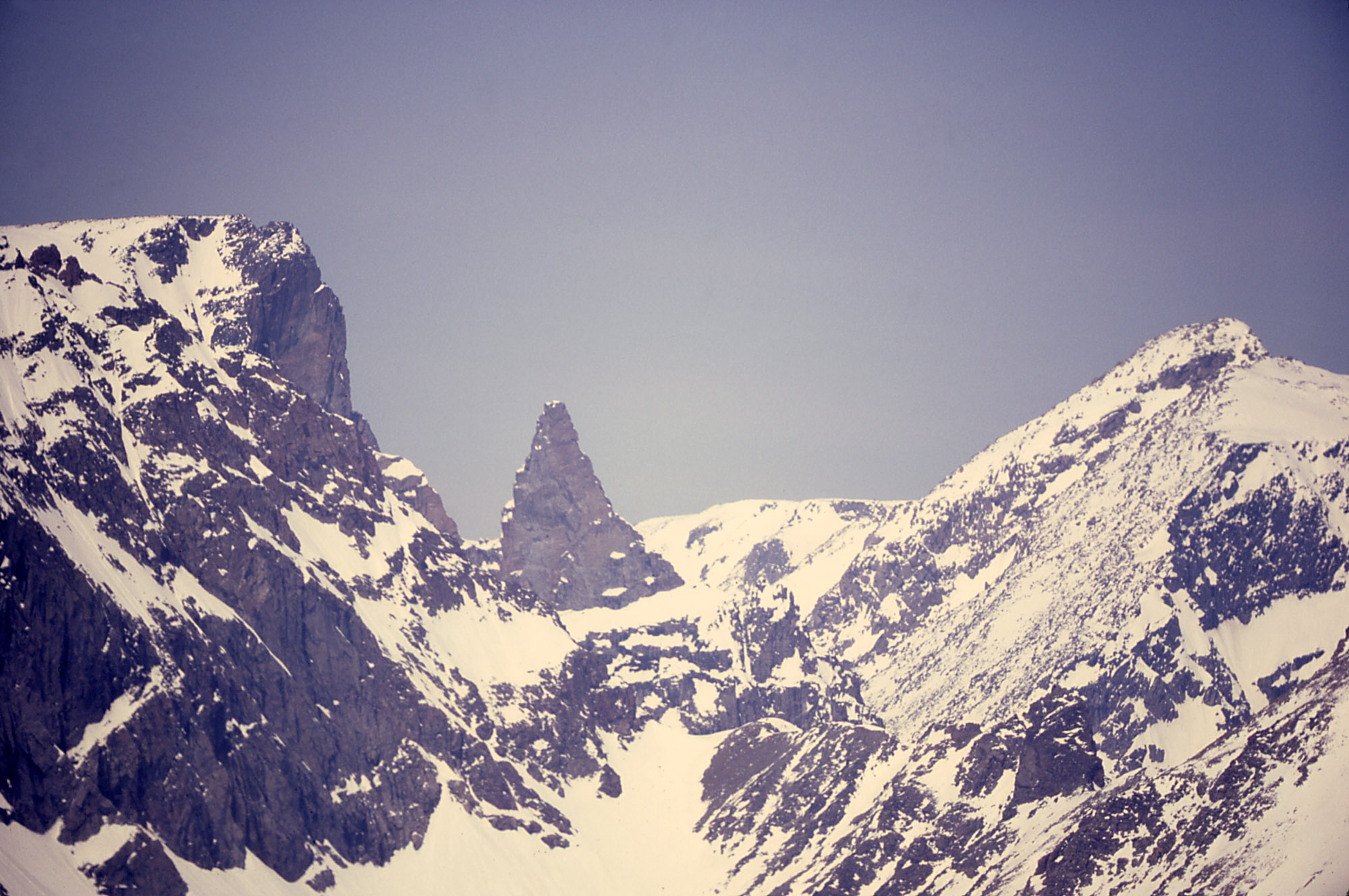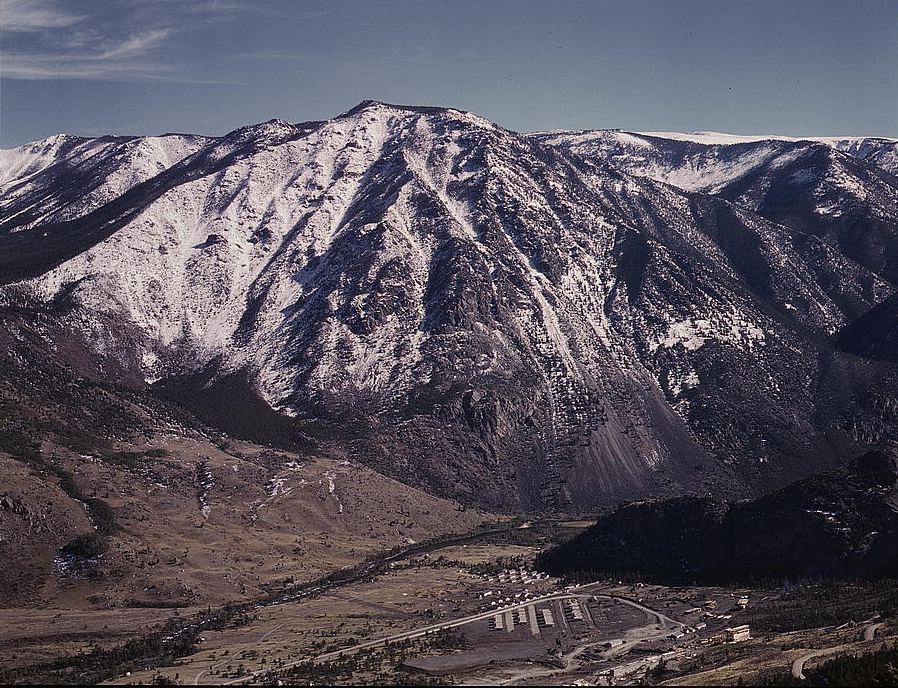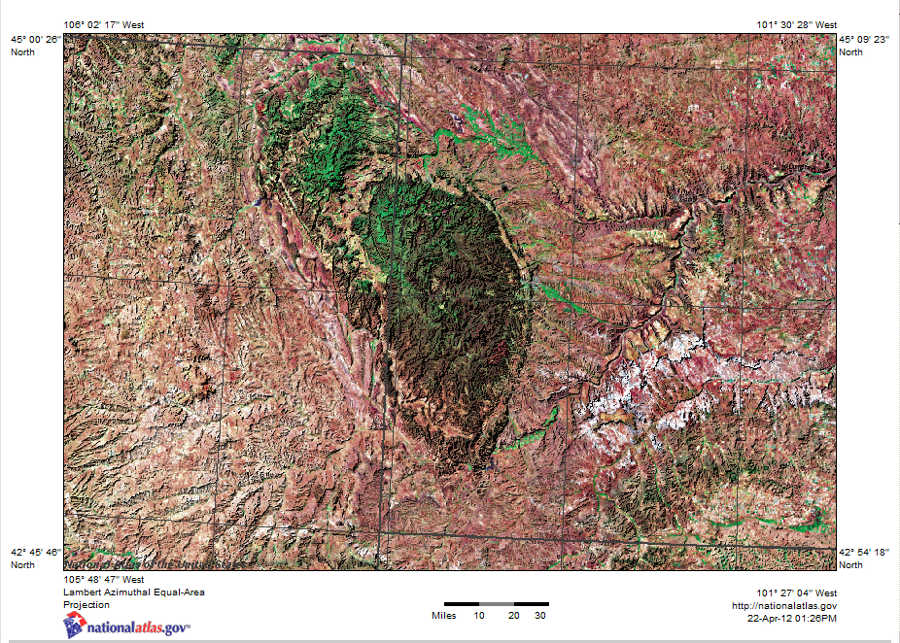|
Drymocallis Fissa
''Drymocallis fissa'', the bigflower cinquefoil, also known as the leafy cinquefoil, leafy drymocallis, or wood beauty, is a small plant also sometimes classified as ''Potentilla fissa''. It is a herbaceous plant with a thick taproot known for its moderately hairy leaves, redish leaf stems, and relatively large yellow flowers. It is native to foothills and lower mountains the Rocky Mountain region in the western United States. Description Individuals of this species have numerous stems that come from the top of a single rootstalk with branched persistent woody stems (caudex). The leaves are pinnate with 7-13 slightly hairy leaflets. Leaflet edges are incised to small points. The stems are hairy and redish. Plant usually most often has a cyme with multiple flowers per stem that is taller than the leaves coming up from the plant's base. Plants usually grow between 15–35 cm tall, but occasionally will be as short as 12 cm or as tall as 45 cm. Flowers and fruit Th ... [...More Info...] [...Related Items...] OR: [Wikipedia] [Google] [Baidu] |
Thomas Nuttall
Thomas Nuttall (5 January 1786 – 10 September 1859) was an English botanist and zoologist who lived and worked in America from 1808 until 1841. Nuttall was born in the village of Long Preston, near Settle in the West Riding of Yorkshire and spent some years as an apprentice printer in England. Soon after going to the United States he met professor Benjamin Smith Barton in Philadelphia. Barton encouraged his strong interest in natural history. Early explorations in the United States In 1810 he travelled to the Great Lakes and in 1811 travelled on the Astor Expedition led by William Price Hunt on behalf of John Jacob Astor up the Missouri River. Nuttall was accompanied by the English botanist John Bradbury, who was collecting plants on behalf of Liverpool botanical gardens. Nuttall and Bradbury left the party at the trading post with the Arikara Indians in South Dakota, and continued farther upriver with Ramsay Crooks. In August they returned to the Arikara post and jo ... [...More Info...] [...Related Items...] OR: [Wikipedia] [Google] [Baidu] |
Carbon County, Montana
Carbon County is a county located in the U.S. state of Montana. As of the 2020 census, the population was 10,473. Its county seat is Red Lodge. Carbon County is part of the Billings, MT Metropolitan Statistical Area. History Carbon County was named for the rich coal deposits found in the area. It was organized on March 4, 1895, from portions of Park and Yellowstone counties. Land from Park and Yellowstone counties was used to form Carbon County on March 4, 1895. More than sixty federally designated historic sites are located in the county, including Petroglyph Canyon, one of the state's most important rock art sites. The first commercial oil well in the state was established in Elk Basin fields in 1915. Geography According to the United States Census Bureau, the county has a total area of , of which is land and (0.6%) is water. Granite Peak, the state's highest mountain, is found in Carbon County's Beartooth Mountains. The Beartooth Highway, one of the "most spe ... [...More Info...] [...Related Items...] OR: [Wikipedia] [Google] [Baidu] |
Flora Of South Dakota
Flora (: floras or florae) is all the plant life present in a particular region or time, generally the naturally occurring ( indigenous) native plants. The corresponding term for animals is '' fauna'', and for fungi, it is ''funga''. Sometimes bacteria and fungi are also referred to as flora as in the terms ''gut flora'' or ''skin flora''. Etymology The word "flora" comes from the Latin name of Flora, the goddess of plants, flowers, and fertility in Roman mythology. The technical term "flora" is then derived from a metonymy of this goddess at the end of the sixteenth century. It was first used in poetry to denote the natural vegetation of an area, but soon also assumed the meaning of a work cataloguing such vegetation. Moreover, "Flora" was used to refer to the flowers of an artificial garden in the seventeenth century. The distinction between vegetation (the general appearance of a community) and flora (the taxonomic composition of a community) was first made by ... [...More Info...] [...Related Items...] OR: [Wikipedia] [Google] [Baidu] |
Flora Of Colorado
Flora (: floras or florae) is all the plant life present in a particular region or time, generally the naturally occurring ( indigenous) native plants. The corresponding term for animals is ''fauna'', and for fungi, it is '' funga''. Sometimes bacteria and fungi are also referred to as flora as in the terms ''gut flora'' or ''skin flora''. Etymology The word "flora" comes from the Latin name of Flora, the goddess of plants, flowers, and fertility in Roman mythology. The technical term "flora" is then derived from a metonymy of this goddess at the end of the sixteenth century. It was first used in poetry to denote the natural vegetation of an area, but soon also assumed the meaning of a work cataloguing such vegetation. Moreover, "Flora" was used to refer to the flowers of an artificial garden in the seventeenth century. The distinction between vegetation (the general appearance of a community) and flora (the taxonomic composition of a community) was first made by Jules Thurma ... [...More Info...] [...Related Items...] OR: [Wikipedia] [Google] [Baidu] |
Drymocallis
''Drymocallis'' is a genus of plants formerly (and sometimes still) included with the typical cinquefoils (''Potentilla''). It contains three species known or suspected to be protocarnivorous, but more cinquefoils might eventually be moved here: *''Drymocallis arguta'' (Pursh) Rydb. – tall cinquefoil, cream cinquefoil *''Drymocallis glandulosa'' (Lindl.) Rydb. – sticky cinquefoil *''Drymocallis rupestris'' (L.) Soják – rock cinquefoil DNA sequence data suggests they are more closely related to ''Chamaerhodos'' and ''Dasiphora ''Dasiphora'' is a genus of shrubs in the rose family Rosaceae, native to Asia, with one species '' D. fruticosa'' (shrubby cinquefoil), ranging across the entire cool temperate Northern Hemisphere. In the past, the genus was normally included in ...'' than to species such as '' Potentilla reptans'' (creeping cinquefoil) which make up the bulk of ''Potentilla''. References External links * Rosaceae genera {{Rosoideae-stub ... [...More Info...] [...Related Items...] OR: [Wikipedia] [Google] [Baidu] |
NatureServe
NatureServe, Inc. is a non-profit organization based in Arlington County, Virginia, US, that provides proprietary wildlife conservation-related data, tools, and services to private and government clients, partner organizations, and the public. NatureServe reports being "headquartered in Arlington, Virginia, with regional offices in four U.S. locations and in Canada." In calendar year 2011 they reported having 86 employees, 6 volunteers, and 15 independent officers. History The Nature Conservancy reports that in 2000 it spun off its 85-center Natural Heritage Network "into a new independent organization, the Association for Biodiversity Information (later renamed NatureServe)." NatureServe reports that it was established in 1994 as the Association for Biodiversity Information. In 2001 the IRS approved a name change to NatureServe that was requested in 1999, while maintaining the organization's 501(c)(3) tax-exempt status granted in July 1995. NatureServe's website declares that it ... [...More Info...] [...Related Items...] OR: [Wikipedia] [Google] [Baidu] |
Drymocallis Fissa A05
''Drymocallis'' is a genus of plants formerly (and sometimes still) included with the typical cinquefoils (''Potentilla''). It contains three species known or suspected to be protocarnivorous, but more cinquefoils might eventually be moved here: *''Drymocallis arguta'' (Pursh) Rydb. – tall cinquefoil, cream cinquefoil *''Drymocallis glandulosa'' (Lindl.) Rydb. – sticky cinquefoil *''Drymocallis rupestris'' (L.) Soják – rock cinquefoil DNA sequence data suggests they are more closely related to ''Chamaerhodos'' and ''Dasiphora ''Dasiphora'' is a genus of shrubs in the rose family Rosaceae, native to Asia, with one species '' D. fruticosa'' (shrubby cinquefoil), ranging across the entire cool temperate Northern Hemisphere. In the past, the genus was normally included in ...'' than to species such as '' Potentilla reptans'' (creeping cinquefoil) which make up the bulk of ''Potentilla''. References External links * Rosaceae genera {{Rosoideae-stub ... [...More Info...] [...Related Items...] OR: [Wikipedia] [Google] [Baidu] |
Custer County, Idaho
Custer County is a rural mountain county in the center of the U.S. state of Idaho. As of the 2020 census, the population was 4,275. The county seat is Challis. Established in 1881, the county was named for the General Custer Mine, where gold was discovered five years earlier. Custer County relies on ranching, mining, and tourism as its main resources. Geography According to the U.S. Census Bureau, the county has a total area of , of which is land and (0.3%) is water. It is the third-largest county in Idaho by area. The Lost River Range, the state's highest mountains, are located in eastern Custer County. The highest is Borah Peak, the highest natural point in Idaho at . On the western border of the county is Idaho's famous Sawtooth Range; the tallest is Thompson Peak in Custer County, above picturesque Redfish Lake. Twenty miles (32 km) east are the White Cloud Mountains, the tallest of which is Castle Peak at . The Salmon River and Big Lost River flow thr ... [...More Info...] [...Related Items...] OR: [Wikipedia] [Google] [Baidu] |
Stillwater County, Montana
Stillwater County is a county in the U.S. state of Montana. As of the 2020 census, the population was 8,963. Its county seat is Columbus. Geography According to the United States Census Bureau, the county has a total area of , of which is land and (0.5%) is water. Major highways * Interstate 90 * U.S. Highway 10 (Former) * Montana Highway 78 Adjacent counties * Golden Valley County - north * Yellowstone County - east * Carbon County - south * Park County - southwest * Sweet Grass County - west National protected areas * Custer National Forest (part) * Grass Lake National Wildlife Refuge * Hailstone National Wildlife Refuge Demographics 2000 census As of the 2000 United States census, there were 8,195 people, 3,234 households, and 2,347 families in the county. The population density was 5 people per square mile (2/km2). There were 3,947 housing units at an average density of 2 per square mile (1/km2). The racial makeup of the county was 96.82% White, 0.13% B ... [...More Info...] [...Related Items...] OR: [Wikipedia] [Google] [Baidu] |
San Miguel County, New Mexico
San Miguel County is a county in the U.S. state of New Mexico. As of the 2010 census, the population was 29,393. Its county seat is Las Vegas. San Miguel County comprises the Las Vegas Micropolitan Statistical Area, which is also included in the Albuquerque–Santa Fe–Las Vegas combined statistical area. Geography According to the U.S. Census Bureau, the county has a total area of , of which is land and (0.4%) is water. Adjacent counties * Mora County - north * Harding County - east * Quay County - southeast * Guadalupe County - south * Torrance County - southwest * Santa Fe County - west National protected areas * Las Vegas National Wildlife Refuge * Pecos National Historical Park (part) * Santa Fe National Forest (part) Demographics 2000 census As of the 2000 census, there were 30,126 people, 11,134 households, and 7,537 families living in the county. The population density was 6 people per square mile (2/km2). There were 14,254 housing units at an average d ... [...More Info...] [...Related Items...] OR: [Wikipedia] [Google] [Baidu] |
Per Axel Rydberg
Per Axel Rydberg (July 6, 1860 – July 25, 1931) was a Swedish-born, American botanist who was the first curator of the New York Botanical Garden Herbarium. Biography Per Axel Rydberg was born in Odh, Västergötland, Sweden and emigrated to the United States in 1882. From 1884 to 1890, he taught mathematics at Luther Academy in Wahoo, Nebraska, while he studied at the University of Nebraska. He graduated from the University of Nebraska–Lincoln (B.S. in 1891) and (M.A. in 1895). He earned his graduate degree from Columbia University (Ph.D. in 1898). After he graduated, Rydberg received a commission from the United States Department of Agriculture to undertake a botanical exploration of western Nebraska. He received another one in 1892 to explore the Black Hills of South Dakota, and in 1893 he was in the Sand Hills, again in western Nebraska. During this time he continued to teach at the Luther Academy. In 1900 Rydberg conducted field work in southeast Colorado. In ... [...More Info...] [...Related Items...] OR: [Wikipedia] [Google] [Baidu] |
Black Hills
The Black Hills ( lkt, Ȟe Sápa; chy, Moʼȯhta-voʼhonáaeva; hid, awaxaawi shiibisha) is an isolated mountain range rising from the Great Plains of North America in western South Dakota and extending into Wyoming, United States. Black Elk Peak (formerly known as Harney Peak), which rises to , is the range's highest summit. The Black Hills encompass the Black Hills National Forest. The name of the hills in Lakota language, Lakota is ', meaning “the heart of everything that is." The Black Hills are considered a holy site. The hills are so called because of their dark appearance from a distance, as they are covered in evergreen trees. Native Americans in the United States, Native Americans have a long history in the Black Hills and consider it a sacred site. After conquering the Cheyenne in 1776, the Lakota people, Lakota took the territory of the Black Hills, which became central to their culture. In 1868, the U.S. government signed the Fort Laramie Treaty of 1868, establish ... [...More Info...] [...Related Items...] OR: [Wikipedia] [Google] [Baidu] |




